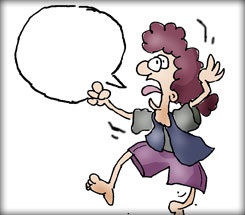One Hand in my Pocket
- January 14, 2013
- By Michael Kline
 Have you ever nicked or slightly cut one of your fingers, or perhaps stubbed a toe? If you are any part of the human race, the likely answer is “yes.” Given my propensity to assemble things made from wood and metal in our backyard, I find myself often questioning where those last few drops of bright red body fluid are coming from—this time. And cutting my finger, or elbow, or nose, or ear (I like to use a lot of dangerous tools) is not nearly as annoying as having to wrap the violated appendage in some kind of flesh-colored piece of adhesive, which renders that body part somewhat useless.
Have you ever nicked or slightly cut one of your fingers, or perhaps stubbed a toe? If you are any part of the human race, the likely answer is “yes.” Given my propensity to assemble things made from wood and metal in our backyard, I find myself often questioning where those last few drops of bright red body fluid are coming from—this time. And cutting my finger, or elbow, or nose, or ear (I like to use a lot of dangerous tools) is not nearly as annoying as having to wrap the violated appendage in some kind of flesh-colored piece of adhesive, which renders that body part somewhat useless.
The fingers are the worst. The bandages catch every time I put a hand in my pocket, I lose some gripping ability (on account of the plastic and the pain), and if I were still in the fourth grade, I would also mention that it becomes unbearably difficult to pick my nose—but I’m not going there. So, with every bump and cut and scratch, I become just a bit disabled. Not for very long, but usually long enough to be thankful that I am able to work with most of my digits and their attached joinery.
Disabilities come in all forms, not just diced fingers. There are attention deficit disorders, problems with loss of vision, learning disabilities, physical disabilities, hearing problems, etc. So how do you teach your students to understand and better communicate with those who are disabled? I would proffer that if you have a disabled child in your classroom, it can actually be an important teaching opportunity. Others can see, first-hand, the difficulties associated with such obstacles. And if you don’t have such a person within your charge, there are lots of ways to teach about impairments. Here are a few:
Silencing a particular student with a piece of cloth may be the dream of some teachers, but here it is an instructive moment (and not really necessary—your call); you can always simply ask the student not to speak. Without showing it to the rest of the class, write out a simple sentence, as in “My dog always seems to be hungry.” Have the student attempt to communicate the sentence without speaking or writing.
You can ask another (or even all) of your pupils to place one hand in their pocket, there to stay for the duration of the day. A simple, but very effective means of teaching disabilities.
If you have a person in your class that speaks a foreign language, ask them to address the others with two or three sentences in their native tongue, and then have the class try and determine what was said.
Blindfolding a student is another way to teach visual constraints, though it would be safe to assign a helper if the project goes mobile in any way; ergo, leaves the confines of his or her desk. If you wish to include the entire class in this activity, try putting a lesson plan on the overhead projector or whiteboard that is seriously out of focus, and ask the kids to attempt to copy the lesson.
Foam earplugs are pretty easy to come by, as are most types of ear protection devices (even a good pair of earmuffs will do). Have one of your students enter the soundless world for a day and ask them to make notes on what they experience.
A good way for your pupils to experience dyslexia would be to have you write out a paragraph where one sentence has the letters transposed, as in “nehT I saw elba ot esu eht tesgniws gnirud ssecer.” Make copies, then have the class read aloud together.
If you wish to bring a bit of pop culture into your disability lesson, be sure to mention Tom Cruise (dyslexic), Stevie Wonder (blind), Pete Townshend (of the Who, going deaf after several years of exposure to loud headphones—a good lesson on turning down the ipods here), or Michael J. Fox (Parkinson’s disease).
As a note: If you plan to participate in any of these activities, it might be to your benefit to disclose to the parents ahead of time what your plan is. Nothing irks a parent more than their child coming home from school and announcing that the teacher had them tied up for most of the day. 🙂
Teach. Learn. Enjoy!